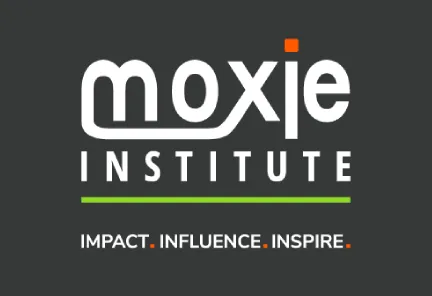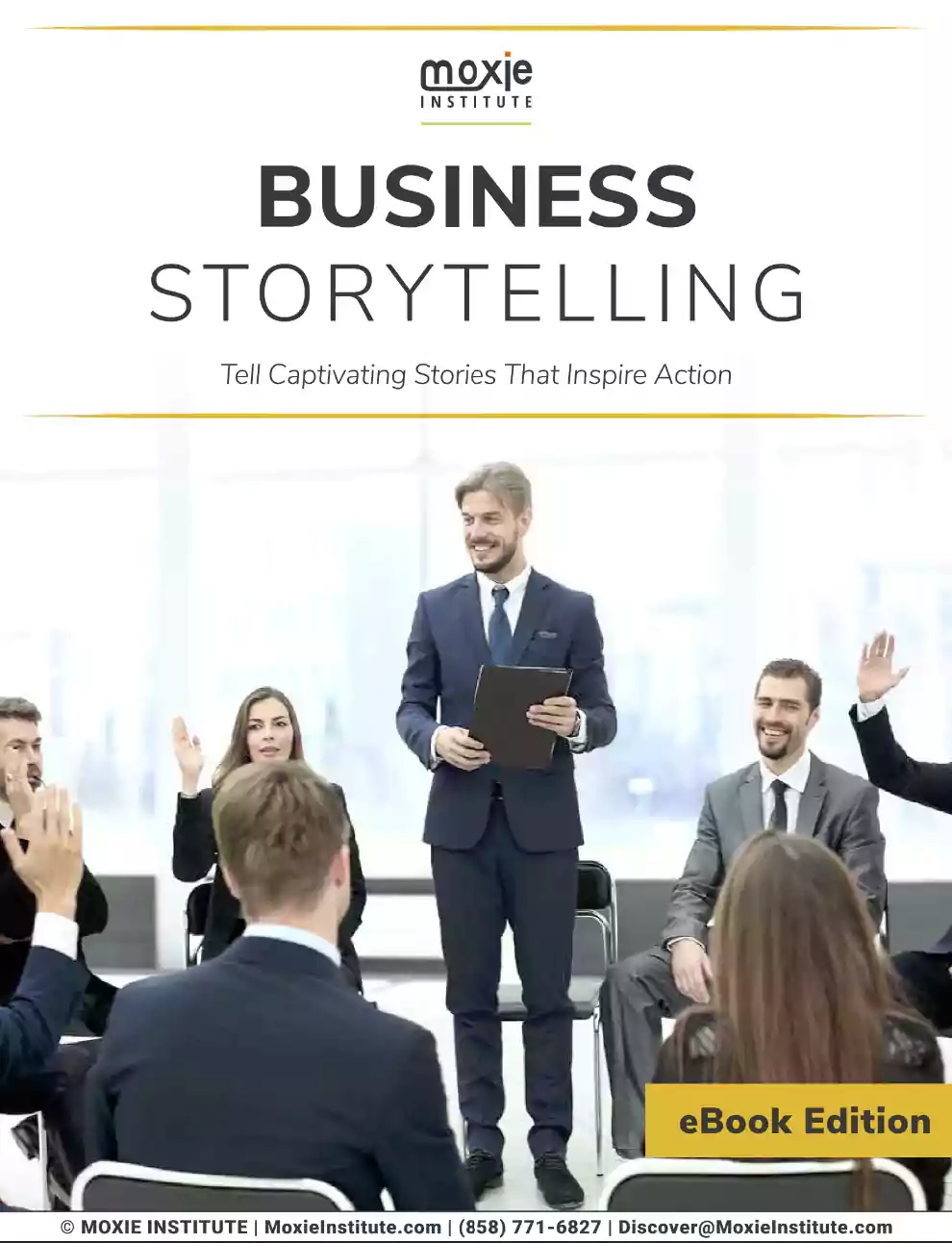In today’s competitive business landscape, investing in the right corporate training company can be the difference between organizational stagnation and transformative growth. According to McKinsey & Company, organizations with robust learning cultures are 92% more likely to innovate and 52% more productive than their counterparts. Yet, many leaders struggle to identify training partners who deliver measurable impact rather than just polished presentations.
This challenge is painfully familiar to many executives. In our work with Fortune 500 companies, we’ve witnessed leaders invest significant resources in training programs that promised transformation but delivered little more than temporary enthusiasm. The result? Wasted budgets, disengaged employees, and missed opportunities for genuine organizational development.
This comprehensive guide will walk you through a strategic, evidence-based approach to selecting a corporate training company that becomes a true catalyst for professional development and business success. You’ll discover the critical evaluation criteria, common pitfalls to avoid, and actionable steps to find a training partner who delivers lasting transformation rather than fleeting inspiration.
Understanding Your Training Needs: The Foundation of Effective Learning
Imagine this scenario: A rapidly scaling technology company invests heavily in a well-reviewed business communication training program. On paper, it looked perfect—engaging content, dynamic facilitators, and glowing recommendations. Yet three months later, the same communication issues persist. Meetings remain inefficient, departments still operate in silos, and employees continue to feel disconnected.
What went wrong? The training program, while high-quality, failed to address the company’s specific pain points. This common scenario highlights why understanding your unique training needs is the critical first step in selecting the right corporate training partner.
Why Generic Training Often Fails to Deliver Results
In our experience working with thousands of professionals across industries, we’ve observed that generic, off-the-shelf training programs typically fall short for three key reasons:
They address symptoms, not root causes: Generic programs often treat surface-level issues without diagnosing the underlying organizational challenges.
They lack contextual relevance: Without industry-specific examples and scenarios, employees struggle to connect training concepts to their daily work.
They offer information, not transformation: Knowledge transfer alone rarely leads to behavior change or skill development without contextual application.
According to the Harvard Business Review, companies waste an estimated $156 billion on ineffective training each year because they fail to align training initiatives with specific organizational needs and objectives.
How to Identify Your Organization’s True Training Needs
To ensure your training investment delivers meaningful results, follow this strategic needs assessment process:
Pain Point Identification Exercise
Step 1: Survey leaders across departments to identify specific performance challenges and skill gaps. Step 2: Gather frontline employee perspectives on barriers to success and areas needing improvement.
Step 3: Analyze performance data to identify objective metrics reflecting these challenges. Step 4: Conduct focus groups to explore the root causes behind the identified issues.
By triangulating these data points, you’ll develop a comprehensive understanding of your organization’s true training needs rather than relying on assumptions or generic assessments.
Quick Takeaways:
Generic training typically fails because it doesn’t address your organization’s specific challenges
Conduct a thorough needs assessment involving multiple stakeholders and data sources
Focus on identifying root causes, not just symptoms
Use both qualitative feedback and quantitative performance metrics
Defining Your Training Objectives: Setting the Stage for Success
Without clear, measurable objectives, even the highest-quality training becomes an expensive exercise in ambiguity. Research from the Association for Talent Development shows that organizations with well-defined learning objectives achieve 42% higher completion rates and significantly better knowledge retention compared to those with vague or undefined goals.
The SMART Framework for Training Objectives
Based on our experience working with Fortune 500 companies, we’ve developed an enhanced SMART framework specifically for corporate training objectives:
Specific: Define exactly which skills or competencies should improve
Measurable: Identify concrete metrics to track progress and success
Achievable: Set realistic expectations based on current baseline performance
Relevant: Align with broader business goals and strategic priorities
Time-bound: Establish clear timeframes for implementation and measurement
Examples of Effective Training Objectives
| Weak Objective | SMART Objective |
|---|---|
| Improve leadership skills | Increase middle management decision-making effectiveness by 20% within 6 months, as measured by employee feedback surveys and project completion rates. |
| Enhance communication | Reduce internal email volume by 15% and meeting durations by 20% within 3 months through improved communication protocols and skills. |
| Build better teams | Increase cross-functional collaboration on key projects by 30% and reduce interdepartmental conflict incidents by 25% over the next quarter. |
Audience Segmentation: Tailoring Objectives to Different Groups
The most effective training programs recognize that different groups within your organization have distinct needs and learning objectives:
Executive Level
Strategic thinking and decision-making
Visionary leadership and organizational alignment
Crisis management and high-stakes communication
Middle Management
Team development and coaching
Operational efficiency and process improvement
Cross-functional collaboration and influence
Individual Contributors
Technical skill enhancement
Personal productivity and time management
Effective communication and conflict resolution
Pro Tip: When establishing training objectives, include representatives from each level of your organization in the planning process. This ensures buy-in across the company and helps identify objectives that might be overlooked when planning occurs only at the leadership level.
By defining clear, measurable objectives for each segment of your workforce, you create a framework that allows potential training providers to demonstrate how their approach will address your specific needs rather than offering generic solutions.
Key Criteria for Evaluating Corporate Training Providers
Selecting the right training partner requires a systematic evaluation process focused on factors that directly impact training effectiveness and results. Based on our experience with thousands of training engagements, we’ve identified the critical criteria that separate exceptional training companies from mediocre ones.
Trainer Expertise and Background
The quality of trainers is perhaps the single most important factor in training effectiveness. When evaluating potential providers, consider:
Real-world experience: Do trainers have executive-level experience in your industry, or are they primarily academics?
Subject matter expertise: Can they speak authoritatively on your specific challenges with relevant examples?
Training credentials: What certifications or specialized training methodologies do they bring?
Communication skills: Are they engaging, dynamic speakers who can maintain participant interest?
According to research from the Journal of Applied Psychology, trainers with industry-specific experience achieve 37% better knowledge transfer rates compared to those with only academic or theoretical backgrounds.
Learning Methodology and Approach
Different training companies employ vastly different methodologies, and the approach must align with your organization’s learning culture and the specific skills being developed:
| Training Approach | Best For | Potential Limitations |
|---|---|---|
| Lecture-based | Knowledge transfer, large groups | Limited engagement, poor retention |
| Experiential learning | Skill-building, behavior change | Time-intensive, smaller groups |
| Case study method | Critical thinking, problem-solving | Can feel theoretical without application |
| Simulation-based | High-stakes skills, decision-making | Technology dependencies, complex setup |
| Coaching-centered | Leadership development, personalization | Higher cost per participant, scalability |
Content Customization Capabilities
The level of customization can dramatically impact training effectiveness:
Surface customization: Generic content with your logo and company name (minimal impact)
Contextual customization: Industry-specific examples and cases (moderate impact)
Comprehensive customization: Content built around your specific challenges, culture, and objectives (maximum impact)
Research from the Corporate Executive Board found that customized training programs resulted in a 75% higher likelihood of skill application compared to generic programs.
Post-Training Support and Reinforcement
Learning science clearly demonstrates that without reinforcement, training retention drops dramatically—by some estimates, up to 90% of training content is forgotten within a week without proper follow-up.
Evaluate potential providers on:
Reinforcement tools: Digital resources, job aids, or practice exercises
Follow-up sessions: Scheduled check-ins or refresher training
Manager involvement: Resources for managers to support skill application
Measurement protocols: Systems to track ongoing implementation and results
Quick Takeaways:
Prioritize trainers with real-world executive experience in your industry
Match learning methodology to your specific objectives and organizational culture
Look for meaningful customization, not just superficial branding
Insist on robust post-training reinforcement to ensure lasting impact
Customized vs. Generic Training: Which Approach Delivers Results?

The decision between customized and generic training solutions represents one of the most consequential choices in your selection process. While off-the-shelf programs may appear cost-effective initially, research consistently shows that customized training delivers significantly higher ROI and lasting impact.
The Financial Impact of Customization
A landmark study by the Boston Consulting Group found that customized training programs yield a 35-60% higher return on investment compared to generic alternatives. This striking difference stems from several factors:
Higher relevance leads to better engagement: When participants see direct connections to their work, attention and retention improve dramatically
Application-focused content accelerates implementation: Customized scenarios enable immediate application of new skills
Organizational context increases retention: Learning that fits within existing frameworks is easier to remember and apply
When Generic Training Makes Sense
Despite the advantages of customization, there are specific situations where generic training may be appropriate:
Standardized compliance requirements: For regulatory or certification training with rigid content requirements
Basic skill development: For foundational skills with limited variation across contexts
Testing new training areas: As a pilot before investing in full customization
The Customization Spectrum: Finding the Right Balance
Rather than viewing customization as binary, consider it as a spectrum with multiple levels:
Level 1: Industry Contextualization
Industry-specific examples and case studies
Relevant terminology and frameworks
Typical challenges faced in your sector
Level 2: Company Integration
Alignment with your organization’s values and culture
Integration with existing systems and processes
References to company-specific tools and resources
Level 3: Role-Specific Application
Distinct learning paths for different roles or departments
Specialized exercises based on specific job functions
Tailored application scenarios based on day-to-day responsibilities
Level 4: Complete Customization
Built from the ground up around your specific challenges
Incorporates your actual business data and scenarios
Designed to address your unique organizational dynamics
Try This Assessment: Ask potential training providers to describe their customization process in detail. Look for specific questions they ask about your organization, not just surface-level information. The depth of their inquiry often indicates the level of customization they provide.
Ensuring Cultural and Organizational Fit
Even the most expertly designed training program will fail if it doesn’t align with your organization’s culture, values, and operational realities. In our experience coaching thousands of professionals across diverse industries, cultural misalignment is one of the primary reasons training initiatives fail to produce lasting results.
Why Cultural Fit Matters
A Fortune 500 technology company once invested in a leadership development program that emphasized rapid decision-making and individual achievement. Despite the program’s excellent content and delivery, it clashed fundamentally with the company’s collaborative, consensus-driven culture. The result? Leaders attempted to implement the new approaches but met significant resistance, ultimately reverting to their previous behaviors.
This example illustrates why cultural alignment is not just a nice-to-have but a necessity. According to research published in the Journal of Organizational Behavior, training programs aligned with organizational culture are 42% more likely to result in sustained behavior change compared to those that create cultural friction.
Key Dimensions of Cultural Fit
When evaluating potential training providers, assess alignment across these critical dimensions:
Communication Style
Directness vs. diplomacy
Formal vs. informal tone
Hierarchical vs. egalitarian interactions
Decision-Making Approach
Data-driven vs. intuitive
Consensus-seeking vs. authoritative
Risk-tolerant vs. risk-averse
Learning Preferences
Theoretical vs. practical focus
Competitive vs. collaborative activities
Structured vs. exploratory methods
Assessing Cultural Fit Before Commitment
To evaluate cultural alignment before making a significant investment, consider these strategies:
Request trainer videos: Observe their communication style and approach
Attend a sample session: Experience their methods firsthand with a small group
Speak with references: Ask specifically about cultural alignment challenges
Review materials: Examine language, examples, and underlying assumptions
Pro Tip: Pay particular attention to how potential training providers respond to your questions and feedback during the evaluation process. Their responsiveness, flexibility, and willingness to adapt often indicate how well they’ll align with your organizational culture during actual training.
Analyzing Case Studies and Proof of Success
When selecting a corporate training company, past performance offers the most reliable indicator of future results. Rather than relying on marketing promises or charismatic sales pitches, savvy leaders demand concrete evidence of impact through relevant case studies and verifiable success metrics.
Moving Beyond Testimonials to Evidence-Based Selection
While testimonials provide a general sense of client satisfaction, they often lack the specific detail needed for informed decision-making. Instead, focus on comprehensive case studies that demonstrate:
Similar challenges: Organizations facing comparable issues to yours
Comparable context: Companies of similar size, industry, or complexity
Specific interventions: Clear description of the training approach used
Measurable outcomes: Quantifiable results achieved over time
Long-term impact: Evidence of sustained change, not just immediate feedback
Red Flags in Case Study Analysis
Be alert to these warning signs when reviewing training provider case studies:
Vague results statements: “Improved leadership effectiveness” without specific metrics
Short measurement windows: Results measured only immediately after training
Anecdotal evidence only: Success stories without supporting data
Outdated examples: Case studies from more than 3-5 years ago
Limited relevance: No examples from your industry or addressing similar challenges
Case Study Evaluation Framework
When analyzing potential training partners’ case studies, use this systematic evaluation framework:
| Dimension | Questions to Ask | What to Look For |
|---|---|---|
| Challenge Clarity | How clearly defined was the initial problem? | Specific challenges with measurable baselines |
| Solution Alignment | How customized was the approach to the specific situation? | Evidence of tailoring vs. one-size-fits-all |
| Measurement Methodology | How rigorously were results tracked and verified? | Multiple data points, clear methodology |
| Implementation Timeline | Over what period were results measured? | Long-term tracking, not just immediate feedback |
| Scalability | How broadly were the results achieved across the organization? | Company-wide impact vs. isolated improvements |
Quick Takeaways:
Prioritize case studies featuring organizations similar to yours
Look for specific, measurable outcomes rather than general claims
Ask for evidence of long-term impact, not just post-training satisfaction
Verify results through direct conversations with references when possible
Measuring Return on Investment (ROI) in Corporate Training
For decision-makers, demonstrating the financial impact of training investments is increasingly essential. According to a study by Training Industry, Inc., 96% of learning and development professionals believe that measuring ROI is important, yet only 18% consistently do so effectively.
In our work with Fortune 500 companies, we’ve found that this measurement gap often stems from a lack of clear methodology rather than a lack of interest. The following framework provides a structured approach to evaluating training ROI before, during, and after implementation.
The Five-Level Training Evaluation Model
Based on the widely respected Kirkpatrick-Phillips model, we recommend a five-level approach to measuring training effectiveness:
Level 1: Reaction
Participant satisfaction and engagement
Perceived relevance and applicability
Initial commitment to implementation
Level 2: Learning
Knowledge acquisition and retention
Skill development and confidence
Attitude and perspective shifts
Level 3: Behavior
Application of new skills and knowledge
Consistency and frequency of implementation
Adaptation to workplace scenarios
Level 4: Results
Impact on business performance metrics
Contribution to strategic objectives
Tangible operational improvements
Level 5: ROI
Financial value of improvements
Comparison to program costs
Net benefit and payback period
Calculating Training ROI: A Practical Approach
The basic formula for training ROI is:
ROI (%) = [(Financial Benefits – Training Costs) / Training Costs] × 100
To apply this formula effectively, follow these steps:
Identify measurable outcomes: Define specific metrics that training should influence
Establish baseline data: Measure current performance before training begins
Calculate program costs: Include direct costs, time investments, and opportunity costs
Measure post-training performance: Track relevant metrics at 30, 60, and 90-day intervals
Isolate training impact: Account for other factors that might influence performance
Convert improvements to financial value: Translate operational gains into dollar amounts
Calculate and report ROI: Apply the formula and share results with stakeholders
Case Example: Communication Training ROI
A financial services firm partnered with Moxie Institute to improve client communication skills among their advisory team. Here’s how they measured the ROI:
Baseline Metrics:
Average client retention rate: 82%
Average assets under management (AUM) growth: 4.2% annually
Client satisfaction score: 7.6/10
Training Investment:
Program cost: $85,000
Participant time (opportunity cost): $120,000
Total investment: $205,000
Results (12 months post-training):
Client retention improved to 89% (+7%)
AUM growth increased to 6.1% (+1.9%)
Client satisfaction rose to 8.8/10 (+1.2 points)
Financial Impact:
Increased retention value: $620,000
Additional AUM growth: $1.4 million
Total financial benefit: $2.02 million
ROI Calculation:
ROI = [($2,020,000 – $205,000) / $205,000] × 100
ROI = 885%
Pro Tip: When evaluating potential training providers, ask specifically about their approach to ROI measurement. The most effective partners will propose a clear methodology for tracking and quantifying results even before training begins.
Key Takeaway: Executive presence is a learnable skill that improves with deliberate practice and professional guidance. By following this structured approach to presence development, you can transform your leadership impact and accelerate your career trajectory.
Common Pitfalls When Choosing a Training Company
Even experienced leaders can fall prey to common mistakes when selecting corporate training partners. Being aware of these potential pitfalls can help you navigate the selection process more effectively and avoid costly missteps.
Top 7 Training Selection Mistakes and How to Avoid Them
1. Prioritizing Cost Over Value
The Mistake: Selecting the lowest-priced provider without considering the quality, customization, or potential return on investment.
Real-World Impact: A healthcare organization chose a budget-friendly leadership training program that saved $30,000 upfront but failed to create lasting behavior change. Six months later, they invested in a more comprehensive program, effectively paying twice.
Prevention Strategy: Evaluate training investments based on expected outcomes and ROI rather than initial cost alone. Consider the financial impact of implementing effective versus ineffective training.
2. Falling for the Charismatic Presenter
The Mistake: Being swayed by a dynamic salesperson or engaging speaker without examining the substance of their program.
Real-World Impact: A technology company selected a training provider based on an impressive pitch meeting. The actual trainers who delivered the program lacked the same expertise and energy, resulting in disappointed participants and minimal skill development.
Prevention Strategy: Request to meet the actual trainers who will deliver your program, not just the sales team. Ask for videos of them in action or attend a sample session.
3. Neglecting Post-Training Reinforcement
The Mistake: Focusing exclusively on the training event without considering how learning will be sustained and applied afterward.
Real-World Impact: A manufacturing company invested in quality communication training but provided no follow-up support. Within weeks, employees reverted to previous behaviors as the training material faded from memory.
Prevention Strategy: Insist on a comprehensive reinforcement plan, including follow-up sessions, manager support tools, and application resources.
4. Overlooking Measurement Methodology
The Mistake: Failing to establish clear success metrics and measurement protocols before training begins.
Real-World Impact: A retail organization conducted extensive sales training but had no way to determine whether improved performance resulted from the training or other factors, making future investment decisions difficult.
Prevention Strategy: Work with potential providers to develop specific measurement criteria and timeline before finalizing any agreement.
5. Choosing a One-Size-Fits-All Solution
The Mistake: Implementing generic training programs without customization to your industry, organization, or specific challenges.
Real-World Impact: A financial services firm used a general leadership program that failed to address the unique regulatory environment and risk management aspects of their industry, creating disconnection between the training and daily reality.
Prevention Strategy: Require evidence of how the provider will customize their approach to your specific context and challenges.
6. Ignoring Cultural Alignment
The Mistake: Selecting a training provider whose approach and values conflict with your organizational culture.
Real-World Impact: An engineering firm with a data-driven, analytical culture brought in a training company that emphasized intuitive decision-making and emotional intelligence without providing the research foundation. This created immediate resistance among participants.
Prevention Strategy: Evaluate cultural fit through thorough discussions about your organization’s values and working style before committing.
7. Failing to Involve Key Stakeholders
The Mistake: Making training selection decisions without input from the people who will participate in or be affected by the training.
Real-World Impact: An IT department leader chose technical training without consulting team members about their actual skill gaps. The resulting program addressed areas where the team was already proficient while ignoring critical needs.
Prevention Strategy: Include representatives from target participant groups in the selection process to ensure relevance and buy-in.
Quick Takeaways:
Evaluate training based on expected outcomes and ROI, not just cost
Meet the actual trainers who will deliver your program
Insist on comprehensive post-training reinforcement
Establish clear success metrics before training begins
Require customization to your specific context and challenges
Ensure cultural alignment between the provider and your organization
Involve key stakeholders in the selection process
Future Trends in Corporate Training
The corporate training landscape is evolving rapidly, driven by technological advances, changing workforce expectations, and shifting business priorities. Understanding these emerging trends can help you select a training partner who will remain relevant and effective as your organization’s needs evolve.
AI-Driven Personalization
Artificial intelligence is revolutionizing training personalization, creating individually tailored learning journeys based on role, learning style, skill gaps, and performance data. According to research from Deloitte, AI-enhanced learning programs improve skill development by up to 32% compared to traditional approaches.
Key developments include:
Adaptive learning paths: Content that adjusts based on individual progress and performance
Personalized skill gap analysis: AI-driven assessments that identify specific development needs
Intelligent content recommendations: Customized resources based on learning patterns and preferences
Look for training providers who are thoughtfully integrating AI capabilities while maintaining the human connection essential for complex skill development.
Immersive Learning Technologies
Virtual and augmented reality technologies are transforming how professionals develop critical skills, particularly in high-stakes or difficult-to-simulate environments. The global market for VR/AR in corporate training is projected to reach $12.6 billion by 2025, according to ABI Research.
Promising applications include:
Virtual practice environments: Safe spaces to develop and refine complex skills
Scenario-based simulations: Realistic challenges that build decision-making capabilities
Guided virtual coaching: Immersive feedback in realistic contexts
When evaluating providers with immersive learning capabilities, focus on those who use technology to enhance learning objectives rather than those who implement it merely as a novelty.
Hybrid Learning Models
The future of corporate training increasingly combines multiple delivery methods to maximize engagement, accessibility, and effectiveness. Research from the Brandon Hall Group found that comprehensive blended learning approaches result in 40% higher completion rates and better knowledge retention than single-method approaches.
Effective hybrid models typically include:
Synchronous learning: Live instructor-led sessions (in-person or virtual)
Asynchronous components: Self-paced modules for flexibility and reinforcement
Social learning elements: Collaborative activities and peer feedback
On-the-job application: Structured implementation of new skills
Coaching support: Individual guidance for skill refinement
Pro Tip: When evaluating training providers, ask specifically about their approach to blended learning. The most effective partners will offer a thoughtful combination of modalities rather than relying exclusively on a single delivery method.
Microlearning and Learning in the Flow of Work
Traditional multi-day training workshops are increasingly being supplemented or replaced by shorter, more targeted learning experiences integrated into everyday work. According to research from the Journal of Applied Psychology, microlearning can improve knowledge transfer by up to 17% and increase engagement by 50% compared to traditional formats.
Key approaches include:
Learning nuggets: 5-15 minute focused skill-building modules
Just-in-time resources: On-demand tools accessed at the moment of need
Workflow-embedded learning: Development opportunities integrated into existing systems
Mobile-first design: Content optimized for consumption on smartphones and tablets
Look for training partners who offer comprehensive ecosystems that combine intensive skill development with ongoing microlearning reinforcement.
Data-Driven Measurement and Analytics
Advanced learning analytics are transforming how organizations measure training effectiveness and impact. According to LinkedIn’s Workplace Learning Report, 74% of L&D professionals consider data analysis a priority for improving training initiatives.
Leading-edge approaches include:
Predictive analytics: Forecasting training needs based on performance patterns
Impact visualization: Real-time dashboards showing training effects on key metrics
Learning experience data: Comprehensive tracking of engagement and application
Correlation analysis: Connecting training activities to business outcomes
When evaluating potential providers, prioritize those who offer sophisticated measurement capabilities aligned with your organization’s key performance indicators.
Your Action Plan: Step-by-Step Guide to Choosing the Right Training Partner

Finding the ideal corporate training partner requires a systematic approach that aligns your organizational needs with the right provider capabilities. This step-by-step action plan will guide you through the selection process, helping you make an informed decision that delivers lasting impact.
Phase 1: Internal Assessment and Preparation
Step 1: Form a Selection Team
Assemble a cross-functional team including:
Learning and development professionals
Business unit leaders or department heads
Potential program participants
Performance or data analysts
Step 2: Define Specific Training Needs
Conduct skills gap analysis across target groups
Review performance data to identify development areas
Survey managers about team capability requirements
Connect training needs to strategic business priorities
Step 3: Establish Clear Objectives and Success Metrics
Define specific, measurable outcomes for the training
Establish baseline measurements for comparison
Determine evaluation methodology and timeline
Secure stakeholder agreement on priority outcomes
Implementation Tool: Create a Training Requirements Document that captures your needs, objectives, and success criteria. This document becomes your evaluation framework for assessing potential providers.
Phase 2: Provider Research and Initial Screening
Step 4: Develop a Provider Longlist
Seek recommendations from industry peers
Research providers specializing in your target skill areas
Review industry reports and professional associations
Consider providers with relevant case studies
Step 5: Initial Provider Screening
Review websites, case studies, and published content
Evaluate trainer credentials and expertise
Assess methodology alignment with your learning culture
Check for industry-specific experience and understanding
Step 6: Send Detailed Request for Proposal (RFP)
Include:
Organization background and context
Specific training objectives and target audiences
Expected outcomes and measurement criteria
Timeline and logistical requirements
Budget parameters (if appropriate to disclose)
Pro Tip: When creating your RFP, include a specific question about how the provider would address a current challenge your organization is facing. Their response will reveal much about their approach and creativity.
Phase 3: In-Depth Evaluation
Step 7: Analyze Proposals Against Your Criteria
Create a scoring system based on:
Customization capabilities
Trainer qualifications and fit
Methodology and approach
Measurement and reinforcement strategy
Cultural alignment
Value for investment
Step 8: Conduct Provider Interviews
With your shortlisted providers:
Meet the actual delivery team, not just sales representatives
Discuss their approach to your specific challenges
Probe their experience with similar organizations
Explore their measurement and reinforcement methodologies
Step 9: Experience Their Training Firsthand
Attend a sample session or workshop
Request access to their digital learning platforms
Review sample materials and participant guides
Observe their facilitation style and approach
Step 10: Check References Thoroughly
Ask references about:
Customization quality and relevance
Trainer expertise and engagement
Implementation support and follow-through
Measurable results achieved
What they would change if starting again
Quick Takeaways:
Form a cross-functional selection team to ensure diverse perspectives
Clearly define training needs and success metrics before approaching providers
Use a systematic scoring system to evaluate proposals objectively
Meet the actual delivery team and experience their training approach firsthand
Conduct thorough reference checks focused on results and implementation
Phase 4: Final Selection and Implementation Planning
Step 11: Make Your Decision
Reconcile evaluation scores with qualitative insights
Consider both immediate fit and long-term partnership potential
Evaluate the total value proposition, not just price
Secure final stakeholder approval
Step 12: Negotiate Terms and Expectations
Clarify deliverables, timelines, and responsibilities
Establish communication protocols and project management
Define measurement processes and reporting
Agree on adaptation and adjustment procedures
Step 13: Develop an Implementation Roadmap
Create a comprehensive communication plan
Prepare managers to support the training initiative
Establish reinforcement mechanisms
Schedule regular evaluation checkpoints
Implementation Exercise: Before finalizing your selection, create a 90-day implementation calendar with your prospective training partner. This planning process will reveal their organizational capabilities and collaborative approach.
The Final Step: The Discovery Call & Essential Questions
Once you’ve identified promising training partners, the discovery call represents a critical opportunity to evaluate fit and capabilities before making your final decision. This conversation should go far beyond surface-level details to explore how the provider will address your specific needs and deliver measurable impact.
Preparing for an Effective Discovery Call
To maximize the value of your initial conversation:
Share context in advance: Provide background on your organization and key challenges
Include key stakeholders: Involve decision-makers and those who will participate in the training
Prepare specific scenarios: Develop real-world examples to discuss how they would approach them
Review their materials thoroughly: Come prepared with informed questions about their methodology
Essential Questions to Ask Potential Training Providers
About Their Approach and Methodology
“How do you assess our organization’s specific needs before designing training?”
“What makes your training methodology different from other providers?”
“How do you balance theory with practical application in your programs?”
“How do you adapt your approach for different learning styles and preferences?”
About Customization and Relevance
“What specific aspects of your program will be customized to our organization?”
“How do you incorporate our industry context and challenges?”
“Can you share an example of how you’ve customized training for a similar organization?”
“How do you ensure content remains relevant to our specific work environment?”
About Measurement and Results
“What specific metrics do you track to measure training effectiveness?”
“How do you help us calculate the ROI of our training investment?”
“What results have similar organizations achieved through your training?”
“How long do you track outcomes after the training is complete?”
About Implementation and Reinforcement
“What specific reinforcement tools and resources do you provide?”
“How do you involve managers in supporting skill application?”
“What follow-up activities do you recommend after the initial training?”
“How do you address barriers to implementation that participants might face?”
About Trainer Expertise and Fit
“Who specifically will be facilitating our training?”
“What experience do your trainers have in our industry or with similar challenges?”
“How do you ensure consistency across different trainers or sessions?”
“How do you match trainer expertise with our specific needs?”
Pro Tip: Pay close attention not just to the answers providers give, but to how they approach the conversation. The best training partners will ask as many questions as they answer, demonstrating their commitment to understanding your unique needs rather than selling a predetermined solution.
Red Flags to Watch For During Discovery Calls
While discovery calls are an opportunity for training providers to put their best foot forward, certain responses or behaviors should raise immediate concerns:
Excessive focus on their methodology rather than your challenges
One-size-fits-all language like “this works for everyone”
Vague or anecdotal evidence instead of specific, measurable results
Reluctance to discuss measurement approaches or past ROI
Unwillingness to connect you with previous clients or references
More time spent selling than understanding your needs
The discovery call should feel like the beginning of a strategic partnership rather than a sales pitch. The right training provider will demonstrate genuine curiosity about your organization and a thoughtful approach to addressing your specific challenges.
Schedule a complimentary discovery call with Moxie Institute to experience how our consultative approach and customized training solutions can deliver measurable results for your organization.
Frequently Asked Questions (FAQs)
What exactly is a corporate training company?
A corporate training company is a specialized organization that designs and delivers professional development programs to enhance workforce skills and capabilities. According to the Association for Talent Development, effective corporate training providers offer a strategic combination of content development, expert facilitation, and performance improvement methodologies. The best corporate training companies function as strategic partners who understand your business objectives and develop customized learning experiences that drive measurable results, not just deliver generalized content.
How do I determine what type of corporate training my organization needs?
Identifying your organization’s training needs requires a systematic approach:
Analyze performance data to identify skill gaps and development opportunities
Gather input from managers about team capability requirements
Survey employees about perceived development needs
Review strategic objectives to align training with business priorities
Conduct focus groups to explore specific challenge areas
According to research from Harvard Business Review, organizations that use data-driven needs assessment approaches are 42% more likely to see measurable performance improvements compared to those relying on intuition or general industry trends.
What’s the difference between customized and off-the-shelf training programs?
| Aspect | Customized Training | Off-the-Shelf Training |
|---|---|---|
| Development Approach | Built specifically for your organization’s needs | Pre-developed for general audiences |
| Relevance | Directly addresses your specific challenges | Covers generic principles and concepts |
| Examples & Scenarios | Features your industry and organizational context | Uses general business situations |
| Implementation Focus | Designed for application in your environment | Requires translation to your context |
| Cost | Higher initial investment | Lower upfront cost |
| Time to Develop | Requires design and customization period | Available for immediate implementation |
| ROI Potential | Higher due to specific relevance and application | Lower due to generalized content |
Research from the Corporate Executive Board shows that customized training programs result in 75% higher skill application rates compared to generic alternatives.
How much should we expect to invest in corporate training?
Training investments vary widely based on scope, customization level, and delivery method. According to Training Industry, Inc., organizations typically spend between $1,500 and $5,000 per employee annually on comprehensive development. Here’s a general framework for understanding training costs:
Entry-level programs: $5,000-$15,000 for standardized workshops with minimal customization
Mid-tier solutions: $15,000-$50,000 for moderately customized programs with some reinforcement
Comprehensive initiatives: $50,000-$250,000+ for fully customized, multi-phase programs with extensive measurement and reinforcement
Rather than focusing solely on cost, calculate the potential ROI by estimating the financial impact of improved performance against your investment. Research from ATD shows that organizations with highly effective training programs have 218% higher income per employee compared to those with less effective training.
How long does it typically take to see results from corporate training?
The timeline for training impact varies based on several factors:
Knowledge acquisition: Measurable within days of training completion
Skill application: Typically observable within 2-4 weeks
Behavior change: Generally established within 2-3 months with proper reinforcement
Business results: Usually measurable within 3-6 months
Full ROI realization: Often requires 6-12 months for complex initiatives
According to the Journal of Applied Psychology, organizations that implement structured reinforcement strategies see results 40% faster than those relying solely on training events. The most effective approach is to establish measurement milestones at regular intervals rather than waiting for a single endpoint to evaluate success.
What are the most important qualities to look for in trainers?
Based on research from the Harvard Business School, the most effective corporate trainers demonstrate these key qualities:
Industry experience: First-hand knowledge of your business context and challenges
Subject matter expertise: Deep understanding of the skills being developed
Facilitation mastery: Ability to engage participants and manage group dynamics
Adaptability: Skill in adjusting approach based on group needs and responses
Business acumen: Understanding of how training connects to organizational strategy
Credibility: Professional presence that commands respect from all levels
Follow-through: Commitment to measuring and supporting implementation
When evaluating trainers, request videos of them in action or arrange sample sessions rather than relying solely on biographies or testimonials.
How can we ensure training leads to actual behavior change?
Creating lasting behavior change requires a systematic approach beyond the training event itself. According to research in the Journal of Management Development, organizations that implement comprehensive reinforcement strategies achieve 4x greater behavior change compared to those focusing only on training delivery.
Effective behavior change strategies include:
Pre-training preparation: Set clear expectations and objectives
Manager involvement: Engage supervisors in supporting application
Spaced learning: Distribute content over time rather than all at once
Practice opportunities: Create structured application scenarios
Accountability systems: Establish check-ins and progress tracking
Peer support networks: Develop communities of practice
Environmental alignment: Remove organizational barriers to implementation
Recognition mechanisms: Acknowledge and reward successful application
Is virtual training as effective as in-person training?
Research from MIT Sloan Management Review indicates that well-designed virtual training can be equally or more effective than in-person alternatives. The key factors determining virtual training effectiveness include:
Interactivity level: Opportunities for active participation and practice
Session length: Shorter, more focused segments (60-90 minutes optimal)
Group size: Smaller cohorts allowing for individual attention
Technology quality: Reliable platforms that minimize distractions
Facilitator skill: Expertise in virtual engagement techniques
Blended elements: Combination of synchronous and asynchronous components
Organizations achieve the best results when selecting delivery methods based on learning objectives rather than convenience alone. For complex skill development, hybrid approaches combining virtual and in-person elements typically yield the strongest outcomes.
How important is post-training reinforcement?
Post-training reinforcement is perhaps the single most critical factor in determining training effectiveness. According to research by the Work Learning Research Institute, without reinforcement, approximately 70% of training content is forgotten within six days and 90% within one month.
Effective reinforcement strategies include:
Microlearning refreshers: Brief content reviews at spaced intervals
Application assignments: Structured opportunities to implement new skills
Manager coaching: Supervisor support for skill development
Peer accountability: Partner or group check-ins on implementation
Digital reinforcement tools: Mobile or email-based reminders and practice prompts
Organizations that implement comprehensive reinforcement achieve up to 4x greater ROI from their training investments compared to those that rely on training events alone.
What trends are shaping the future of corporate training?
The corporate training landscape is evolving rapidly, shaped by several key trends:
Personalization at scale: AI-driven adaptive learning tailored to individual needs
Learning in the flow of work: Development integrated into daily activities rather than separate events
Virtual reality applications: Immersive simulations for complex skill development
Microlearning ecosystems: Interconnected short-form content aligned with larger objectives
Performance support tools: Just-in-time resources available at the moment of need
Advanced analytics: Sophisticated measurement of learning impact and behavior change
Cross-functional skill development: Training designed to break down organizational silos
According to Deloitte’s Corporate Learning Trends, organizations that stay ahead of these trends demonstrate 37% higher employee productivity and 58% greater preparedness to meet future business challenges.
TAKE THE FIRST STEP TO MASTER POWERFUL NEW SKILLS
Schedule an easy 30-minute call using our using our calendar. We’re here to help!









